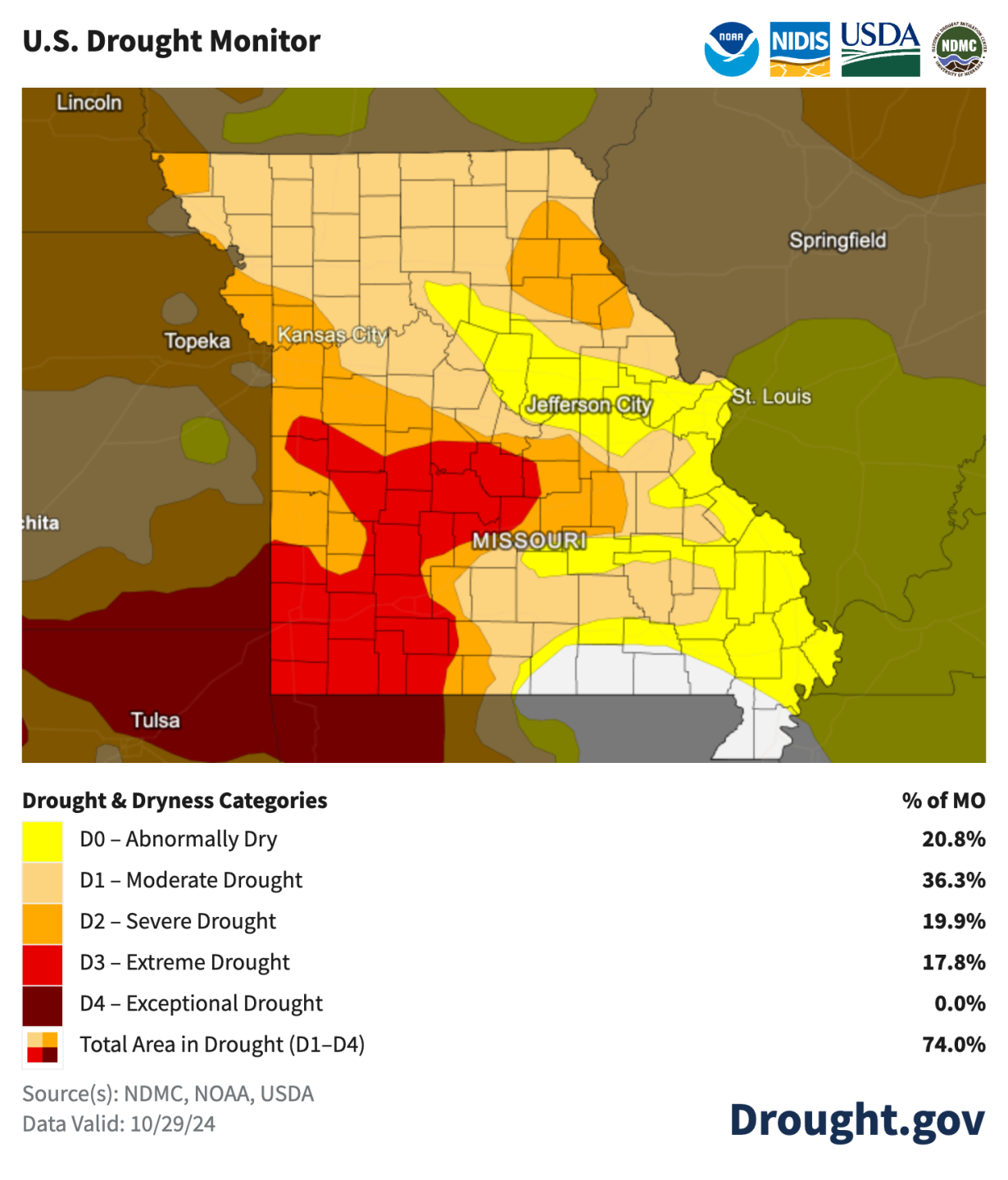BUTLER, Mo. — Nationwide drought conditions over the last three years have left cattle producers with a shortage of grazing acres, hay and water.
"Two years ago we sold a tremendous amount of cows," said Jim Hertzog, owner of Mo-Kan Livestock Auction. "We'd sell 300-400 cows every Thursday and they all went straight to slaughter.”

The dry conditions forced farmers to sell their cows off for cash flow to remain in business.
"Last year, for instance, it was dry, hay was short and prices were high, about $130.00 a bale," Hertzog said. "Producers couldn't afford to buy the hay and keep the cows. So, they had to sell their cows."
This year is different, according to Hertzog.
He says cattle producers have abundant hay and drier conditions caused them to feed hay.
Cattle producers will be able to maintain manageable numbers in their herds.

"I don't think we're going to lose any more cows to this drought just because we are blessed with an abundant hay crop," Hertzog said. "With cheaper commodity prices, producers can afford to feed them grain and protein that kind of help them through the drought."
Bruce Mershon is a cattle producer from Buckner, Missouri.
I met with him at an auction Saturday.
"My wife Tracy and I are selling 45 of our six-year-old cows and their baby calves," Mershon said. "These cows are anywhere from 30 to 60 days old today. I'm guessing that these could bring somewhere around $3,500. The calves, in combination, somewhere from $3,000 to $3,500."

Mershon's cows aren't heading to slaughter. They're selling as pairs to other producers to breed.
He is one of many cattle producers affected by drought in the last three years.
The January 1, 2024, Cattle Inventory Report issued by the U.S. Department of Agriculture stated the cattle population reached its lowest number since 1951.
The declining numbers of cattle in the United States led to supply and demand issues and raised prices for producers and consumers.

"We have positive margins," Mershon said. "Unfortunately, I don't think they're wide enough margins we're going to start breeding more cows. We're just going to maintain a similar number of cows it looks like in the foreseeable future."
The Bureau of Labor Statistics reports the cost of all uncooked beef steaks from March 2020 to September 2024 is up $3.20.
Mershon said the demand from international trade partners and U.S. buyers shows consumers are willing to pay more for quality American beef.
"We're starting to get a share of that retail dollar," he said.

While livestock producers are beginning to turn a profit on their animals, drought remains on their minds.
"The biggest concern is water in the farm pond," Hertzog said. "Not everybody has rural water or a well. You can haul hay and can haul feed to the cattle, but it's hard to haul water. We just need a bunch of rain to fill those ponds."
Portions of southwestern Missouri are experiencing extreme drought conditions and much of the Kansas City area is in a severe drought.

"What people don't realize, when the grass stops growing and the cows eat it down really short, we're having to feed," Mershon said. "It really hampers the production in the next year forward. Maintaining adequate moisture isn't just about today, it's about the next six months or the next year and our ability to produce grass and produce cattle the most efficient way possible for consumers."

Mershon said market trends are predicting the cost of quality-labeled beef products will remain high. Increased profit in the fall will sustain farmers as the weather transitions to winter.
"I'm just optimistic because we're doing a better job every day," said Mershon. "If the weather kind of hangs in there with the demand and we have a good demand for our product, I feel confident in the future."





